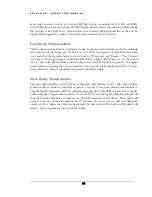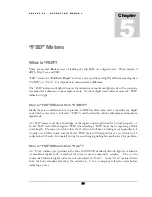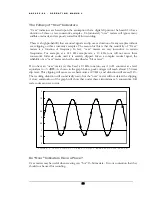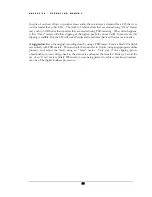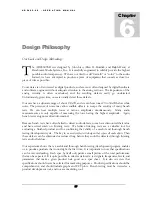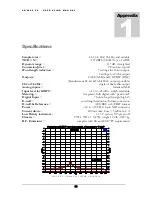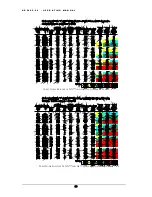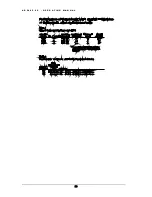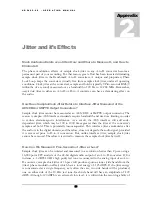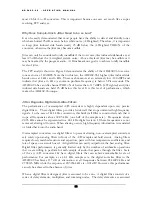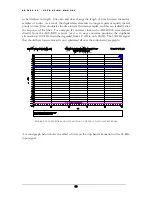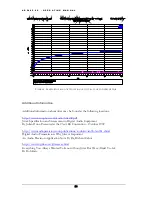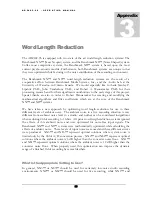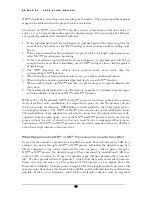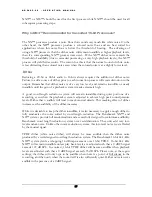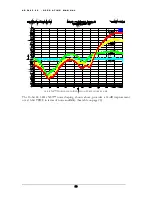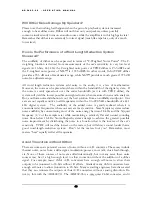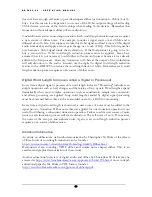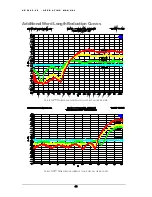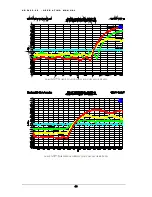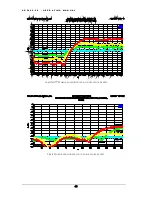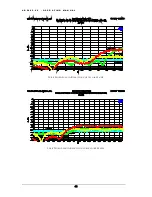
A D 2 4 0 2 - 9 6 - O P E R A T I N G M A N U A L
NN3™ or NS3™ should be used for the first process, while NN3™ should be used for all
subsequent processing steps.
Why is NN3™ Recommended for Cascaded 16-bit Processes?
The NN™ processes produce a noise floor that sounds very much like white noise. On the
other hand, the NS™ processes produce a colored noise floor and are best suited for
applications where this noise floor is below the threshold of hearing. The advantage of
using a NS™ process is that the dither noise will remain inaudible at higher playback levels,
than if a corresponding NN™ process were used. IF the NS™ dither noise exceeds the
threshold of audibility (due to cascaded processing or very high playback levels), the NS™
process will yield better results. The reason for this is that the natural sound of white noise
is less distracting than colored noise even when the colored noise is at a slightly lower level.
Dither
Reducing a 20-bit or 24-bit audio to 16-bits always requires the addition of dither noise.
Failure to add a source of dither prior to each truncation process will create distortion in the
output. Remember that dither noise is of a very low level, and remains inaudible or nearly
inaudible until the gain of a playback system is made extremely high.
A good word length reduction system will remain inaudible during quiet portions of a
recording, even when the playback system is adjusted to achieve high peak sound pressure
levels. Dither that
is
audible will tend to mask musical details. This masking effect of dither
increases as the audibility of the dither increases.
While it is desirable to keep the dither inaudible, it is also necessary to apply enough dither to
fully randomize the noise added by word length reduction. The Benchmark NN™ and
NS™ systems provide full randomization and are carefully designed for minimum audibility.
Benchmark word length reduction systems never add distortion. They only add very low-
level random noise. Unlike other noise reduction systems, this low-level noise is
not
effected
by the musical signal.
TPDF dither (white noise dither), will always be more audible than the dither noise
produced by a well-designed word length reduction system. The Benchmark 16-bit 44.1-kHz
NS3™ system yields a whopping 14-dB improvement over 16-bit TPDF. 16-bit 44.1 kHz
NS3™ will remain inaudible unless play back levels are adjusted such that a 0 dBFS signal
exceeds 107 dB SPL. In contrast, 16-bit TPDF dither will become audible when playback
levels are adjusted such that a 0 dBFS signal exceeds 93 dB SPL. Please note, at these gain
settings, the dither will only
begin
to be audible when there is a point of full silence in the
recording, and then only when the room itself is also sufficiently quiet. Dither noise is never
audible in the presence of a 0 dBFS signal.
37

